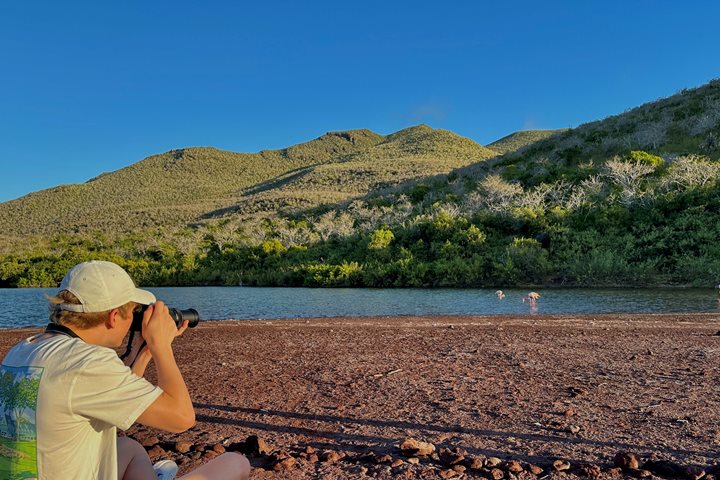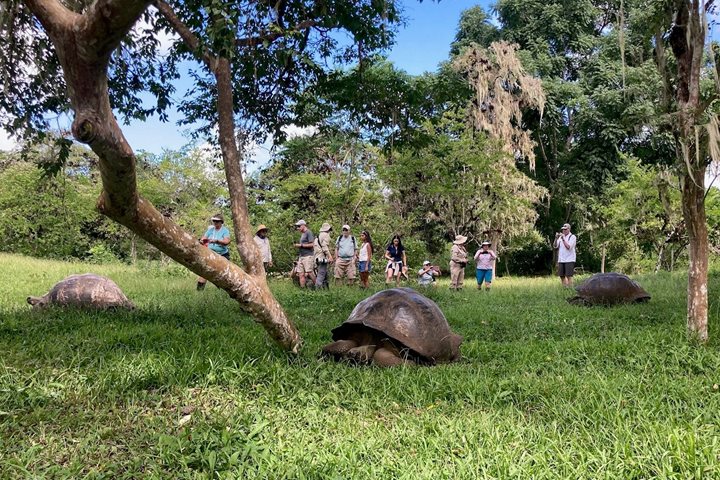We woke up to super calm waters off the northern coastline of Floreana Island. Perfect conditions for a bit of kayaking among the offshore islets near Post Office Bay! Brown pelicans, egrets, green sea turtles, and red, black, and white mangroves…a peaceful environment for an hour or so before breakfast. Some guests went straight to the beach to walk a few yards through saltbushes and found themselves facing the famous “barrel” of Post Office Bay. It’s been over a century since the barrel was first placed here for use by whalers to exchange correspondence and carry back letters of business, or perhaps letters to loved ones. Today, postcards fill the barrel, but the turnover is fast. Each day, some of the postcards are taken for delivery while others are left behind in hopes that someone will continue the tradition and hand-deliver them in the weeks to come.
Between breakfast and lunch, we played in or on the water around Champion Islet, just to the northeast of Floreana Island. We didn’t make a landing but explored by Zodiac, including a birdwatching circumnavigation followed by deep-water snorkeling in incredible waters with parrotfish, angelfish, pufferfish, damselfish…all kinds of fish! Sea lions buzzed by, desperate to draw attention and get a reaction out of us, which they did. Squeals and shrieks were heard.
After an instructional briefing on iPhone photography and a presentation on Charles Darwin in the afternoon, we went ashore on the main island of Floreana. There has been quite a drought this year and not much rain the previous year either. The land was dry, the vegetation was brittle, and dead leaves were everywhere. But all that is fine for the native and endemic species; after all, they’ve been through this before, over the millennia, and survived. The stress is on the introduced species who depend on higher amounts of freshwater for survival. While their defenses are down and populations are stressed, now is the time to really push for programs to eradicate introduced species. Floreana Island is ready for restoration. The National Park and collaborating NGOs are preparing Floreana to receive native species that were once thought doomed for extinction. Giant tortoises, Floreana mockingbirds, and racer snakes may yet survive and prosper with the help of these organizations.
We spent the afternoon following an easy trail from a dark-colored beach of mineral origin and over the isthmus to a white, organic beach where green sea turtles were riding the breakers offshore. The turtles are not quite ready to come ashore and lay eggs, as temperatures are still too low for another month or so. But a great blue heron and frigatebird were checking out the scene, just in case someone tried for an early nesting. It will be a couple months before hatchlings try to race to the ocean in the dark of night.
We returned to our base of operations as the sun set low on the horizon. National Geographic Islander II was waiting for us with hot water and the comforts of home.







